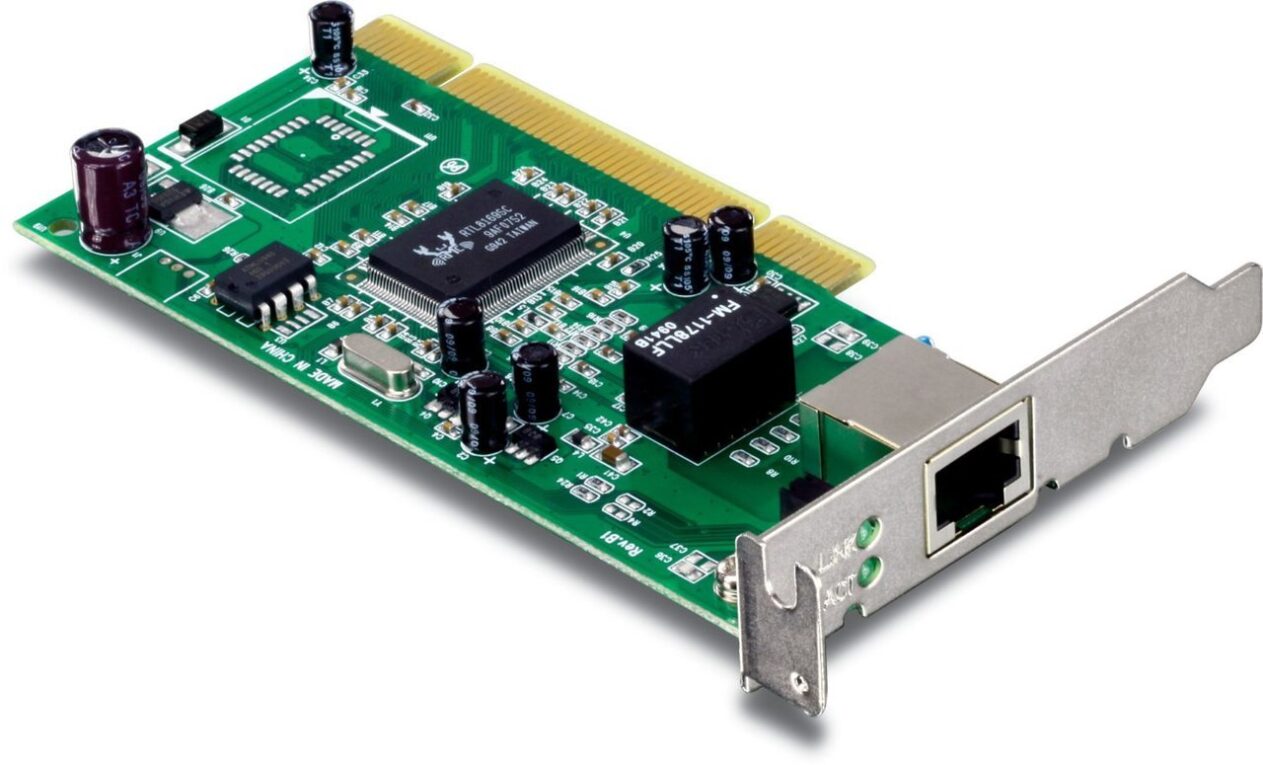Ethernet cards, also known as Network Interface Cards (NICs), are essential computer components that allow devices to connect to a computer network and access the internet.
What is an Ethernet Card?
An Ethernet card is a network interface installed into a computer or network device that provides a physical link between the device and an Ethernet network. Ethernet cards convert digital data from the device into an electric signal that can be transmitted over network cables like Ethernet cables.
At the other end, another Ethernet Cards receives these electric signals and converts them back into digital data that the receiving device can understand and process. Without an Ethernet card, a computer or network device would not be able to communicate over an Ethernet network or access the internet.
Key Components of an Ethernet Card
Ethernet cards come with various components that allow them to function properly:
– Network Interface Controller (NIC): This is the main computer chip located on the Ethernet card that handles all the network communication tasks. It encodes and decodes digital signals for transmission and reception.
– MAC Address: A unique hardware address assigned to each Ethernet card during manufacturing. This acts as the identifier for the device on the network.
– Ethernet Port: The physical connector (RJ45) on the card where an Ethernet cable is plugged in to establish the physical link with the network.
– Drivers: Special software that helps the operating system interface with the Ethernet card’s NIC. Drivers need to be installed for the card to work properly.
– Firmware: Low-level onboard software that controls basic functions of the NIC independently of the operating system. Can sometimes be upgraded.
Types of Ethernet Cards
Different types of Ethernet cards are available based on specifications and intended usage:
– Integrated Ethernet: Built into the motherboard itself and not a separate add-on card. Cheaper but has lower performance.
– PCI/PCIe Ethernet Card: Standard expansion card that plugs into a motherboard slot like PCI or PCIe. Offers better performance than integrated NICs.
– USB Ethernet Adapter: Connects to a USB port for wireless and temporary network access. Inexpensive but a notch lower in speed.
– SFP/SFP+ Modules: Hot-pluggable modules that plug into special ports on network switches and servers for fiber connectivity in data centers.
– 10GbE/25GbE/40GbE Cards: High-speed Ethernet cards used in servers, routers, and switches that support multi-gigabit network infrastructure.
How do Ethernet Cards Enable Networking?
Ethernet cards play a vital role in delivering networking capabilities to computers and network devices:
Physical and Data Link Layer Functions
At the physical layer, the Ethernet port and PHY chip convert digital bits into electric signals to transmit over cables. On reception, they decode the signals back into bits.
The MAC address, along with additional Frame Check Sequencing (FCS), guarantees accurate transmission of packets across the physical medium without errors. This implements the data link functionality.
IP Address and Network Communication
Once physically connected via the NIC, it is assigned an IP address by the network’s DHCP server. This IP helps uniquely identify the device at the network/internet layer.
It can now use networking protocols like TCP, UDP along with higher-layer applications to communicate with other IP-enabled devices on the LAN or internet by transmitting and receiving packets.
Remote Access and Virtualization Support
Modern Enterprise-grade NICs can even support remote management via technologies like IPMI or iDRAC. They also integrate with hypervisors for reliable virtual network connectivity.
Troubleshooting Ethernet Cards
Issues with Ethernet cards can cause network connectivity and communication problems. Here are some tips to diagnose and resolve common Ethernet card issues:
– Check cable connections and try different cables or ports to verify any defective cables or ports.
– Verify the Link lights on the card and switch port are on to confirm the physical link integrity.
– Update or reinstall the latest drivers from the manufacturer’s website. Outdated drivers can lead to glitches.
– If using Wi-Fi, reset the wireless adapter and check for any firmware updates.
– Run IP configuration diagnostic utilities and IPCONFIG /ALL to check the IP address and settings.
– Check network adapter settings in Control Panel for any disabled functions.
– Replace the card if above steps don’t work to rule out any hardware faults in the Ethernet card.
Ethernet cards play a vital role in delivering wired network connectivity. By understanding their components and functions at various OSI layers, users can better troubleshoot any network issues involving Ethernet cards. With the various types available, businesses and homes remain well-equipped for their networking needs. Proper installation and maintenance of Ethernet cards is crucial for maintaining network uptime and service availability.
*Note:
1. Source: Coherent Market Insights, Public sources, Desk research
2. We have leveraged AI tools to mine information and compile it

